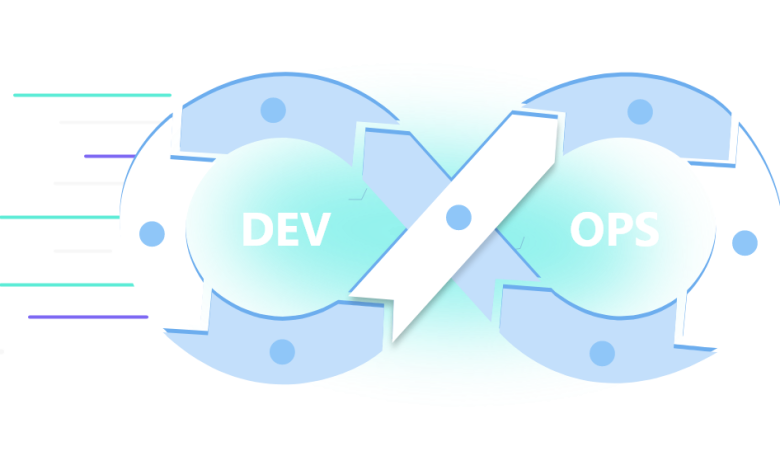Best Practices for DevOps Implementation in 2023

Best practices are the optimal ways of doing things that all companies are striving to achieve. Best practices help companies save time and money while at the same time improving customer satisfaction with their products and services. This can vary depending on the type of industry you operate in. They also have different phases, depending on your company’s maturity with regards to DevOps implementation.
What is DevOps?
DevOps is a methodology that aims to align software development and operations. It’s made up of two parts: Dev, which stands for Development, and Ops, which stands for Operations. The central goal of DevOps is to remove the communication gaps between the two departments. This way, both sides can better understand what is needed to make things go more smoothly. With this mindset, organizations are able to provide features faster without as many bugs or hiccups as they used to have with an old-school approach.
Look At the Best Practices for DevOps Implementation
Active Collaboration of Stakeholders
The best way to ensure your organization is prepared for the demands of the future is to actively collaborate with stakeholders. This will not only help you understand what the next generation of technology may require from you. But it will also allow you to educate them on how you can meet their expectations and needs. In order to do this successfully, we recommend building an infrastructure team that focuses specifically on supporting a customer-driven DevOps model.
If this team includes members from both business and technical groups, it can offer additional value by acting as a liaison between teams to keep communications open. A DevOps Implementation Roadmap is a living document that allows the stakeholders to understand the flow of how their organization will make changes to their processes in order to move towards becoming a DevOps-enabled enterprise.
Automation of Tests and Building Environment
While it is important to have a good balance of automation and human involvement, one of the most important steps for successful DevOps implementation is automating as many tests and building environment tasks as possible. Automating these types of tasks not only frees up time and resources. But also reduces human error that can lead to downtime or other issues.
Automation can be done both on the development side with pre-commit hooks and the deployment side with configuration management tools like Ansible and Chef. The more involved the process, the higher number of tests that need to be automated. For example, while unit testing an application might only require a single test, testing integration points between applications may require dozens if not hundreds of automated checks at every stage.
Integrated Configuration and Change Management
This can be accomplished through an automated configuration and change management approach. Automated configuration and change management is an integral component of the DevOps process. Which relies on the integration of configuration tools and change management tools. With the help of these products, IT professionals will be able to streamline the development process. Reduce downtime and increase customer satisfaction.
Put Customer
Putting customers first is one of the most important parts of any business, and this is especially true with DevOps. It’s about providing end users with a well-functioning product that addresses their needs. This can only happen when it’s possible to quickly adapt to changing demands, and it starts by putting the customer first. By hiring software developers in India, you are able to focus on your core business while also meeting the needs of customers around the world. The result? A better bottom line.
Automate wherever possible
In the future, it’s likely that all DevOps tasks will be automated. And, if this is the case, then automating all operations should be a key goal of any company’s IT department. As such, you need to make it a priority today to find ways to automate and streamline all manual processes wherever possible. If you’re already using a system like Chef or Puppet, automation might not be as difficult as one might think. If not, it may take some time to transition from manual methods to an automated process.
Real-time visibility into the project
With all the different parts of a project, it is difficult to know what is going on at any given time. There are so many different moving parts that you need to keep track of and keep up with. It can be hard to get the information you need when you need it, but by using a technology like software-defined networking. There will be real-time visibility into the project. The more data points you have about your project. The easier it will be to identify and solve problems before they become worse.
Better results with monitoring & feedback
Improved processes have enabled better results with monitoring and feedback. Monitoring is an essential part of any DevOps implementation. It ensures you can get the most from your deployment through feedback loops and constant improvement. This helps you avoid errors, reduce frustration, and stay ahead of competitors. Learn about new capabilities of monitoring tools, as well as how to make the most of what you already have, to gain a competitive advantage in your market now!
Cloud Computing
More than ever, organizations are turning to the cloud to meet their needs. With more data being collected and stored, companies need a scalable and efficient way to manage this influx of data. Cloud computing provides on-demand access to compute resources which makes it easier for organizations to scale as needed. The shift from traditional IT to SaaS (Software as a Service) is one trend that’s been driving the adoption of cloud computing. As costs go down, IT departments can reinvest savings back into core business functions rather than maintaining the infrastructure they once did themselves.
Security
Securing your infrastructure is a major part of a successful DevOps implementation. Protecting your data from theft and intrusion are essential. But it’s not enough to just have the latest security systems in place. You also need to make sure that you’re doing everything you can to keep your staff as safe as possible too. That means not only making sure that they have the necessary skills and knowledge. But that you’re providing them with the tools and resources they need to succeed.
Delivery and Product Support
DevOps has been the most effective way to integrate Product Management and Software Development. With a DevOps model, software developers can work with product managers and engineers to deliver high-quality products at speed. To ensure that this is working smoothly, companies need to hire skilled software developers and specialists.
For example, hiring engineers in India may be beneficial since they can provide quality services at a lower cost than some other countries. If you are interested in improving your delivery or product support process. Consider implementing DevOps as it is an efficient way of doing so!
Conclusion
The best practices of DevOps implementation can be used to build a successful and sustainable environment. It is important to balance the need for high velocity code deployment with stability and security. In conclusion, successful implementations require strategic investments in automation, monitoring, and change management techniques.
In conclusion, it is important to remember that DevOps is not a one-size-fits-all solution. If you want to implement the right system, make sure you hire software developers in India who are familiar with your technology stack and have experience building distributed systems.




